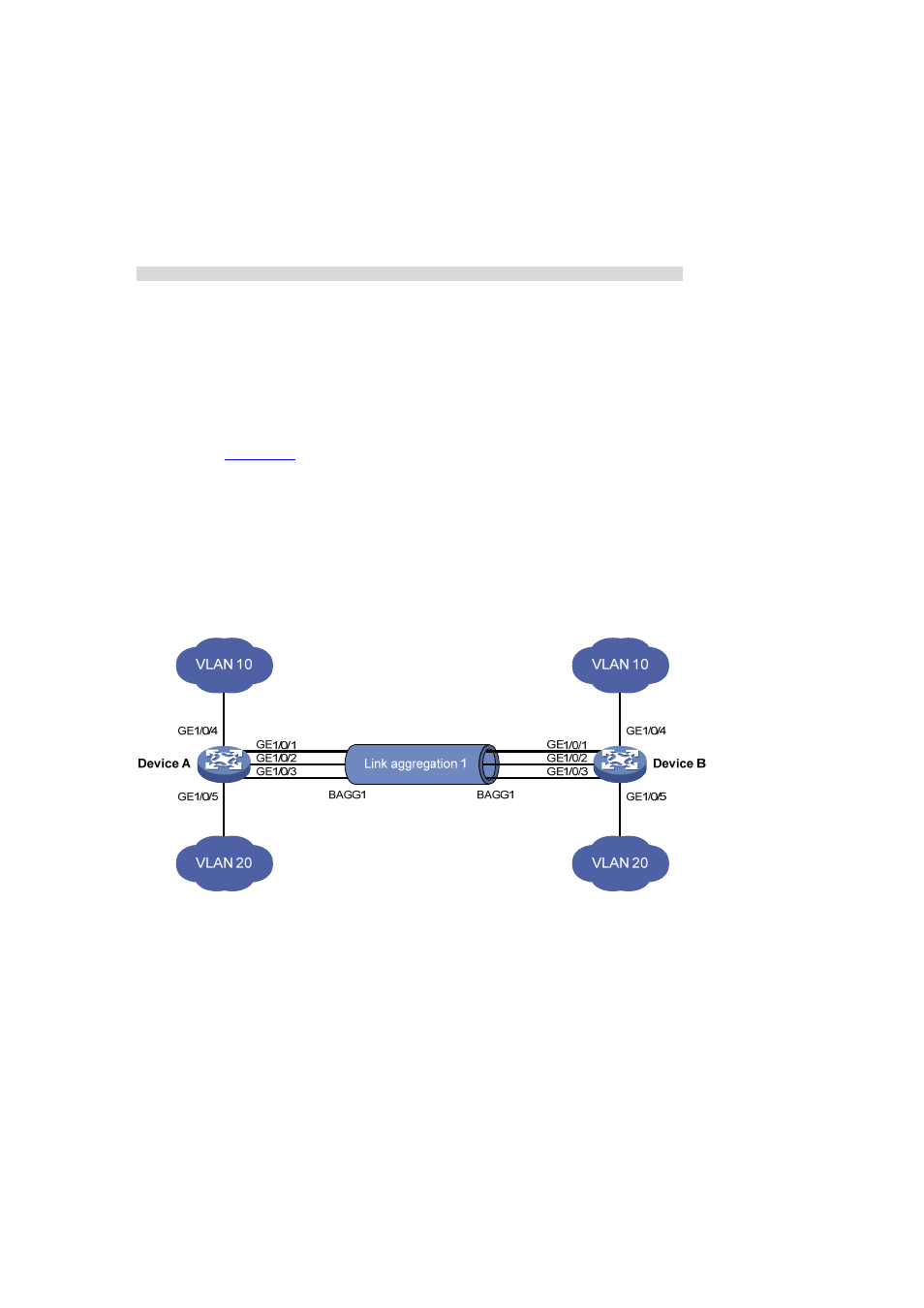Dynamic aggregation configuration example, Network requirements, Configuration procedure – H3C Technologies H3C S5120 Series Switches User Manual
Page 112

1-14
BAGG -- Bridge-Aggregation, RAGG -- Route-Aggregation
Aggregation Mode: S -- Static, D -- Dynamic
Loadsharing Type: Shar -- Loadsharing, NonS -- Non-Loadsharing
Actor System ID: 0x8000, 000f-e2ff-0001
AGG AGG Partner ID Select Unselect Share
Interface Mode Ports Ports Type
-------------------------------------------------------------------------------
BAGG1 S none 3 0 Shar
The output shows that link aggregation group 1 is a load sharing Layer 2 static aggregation group and it
contains three selected ports.
Dynamic Aggregation Configuration Example
Network requirements
As shown in
z
Device A and Device B are connected through their respective Layer 2 Ethernet interfaces
GigabitEthernet 1/0/1 through GigabitEthernet 1/0/3.
z
Configure a Layer 2 dynamic link aggregation group on Device A and Device B respectively,
enable VLAN 10 at one end of the aggregate link to communicate with VLAN 10 at the other end,
and VLAN 20 at one end to communicate with VLAN 20 at the other end..
Figure 1-5 Network diagram for dynamic aggregation
Configuration procedure
1) Configure Device A
# Create VLAN 10, and assign port GigabitEthernet 1/0/4 to VLAN 10.
[DeviceA] vlan 10
[DeviceA-vlan10] port GigabitEthernet 1/0/4
[DeviceA-vlan10] quit
# Create VLAN 20, and assign port GigabitEthernet 1/0/5 to VLAN 20.
[DeviceA] vlan 20
[DeviceA-vlan20] port GigabitEthernet 1/0/5
